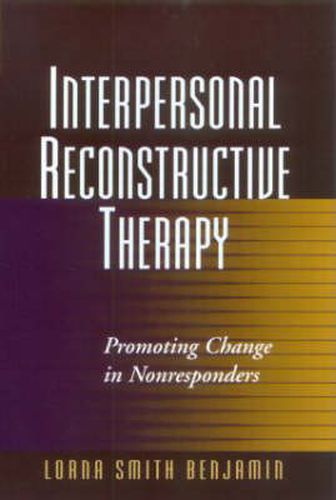Readings Newsletter
Become a Readings Member to make your shopping experience even easier.
Sign in or sign up for free!
You’re not far away from qualifying for FREE standard shipping within Australia
You’ve qualified for FREE standard shipping within Australia
The cart is loading…






Drawing on and extending the concepts presented in her earlier Interpersonal Diagnosis and Treatment of Personality Disorders, leading scientist-practitioner Lorna Smith Benjamin now presents a powerful, evidence-based therapeutic model that is applicable to a broad cross-section of the nonresponder population. At the heart of interpersonal reconstructive therapy (IRT) is a clearly explained method of case conceptualization that links presenting problems to longstanding patterns in interpersonal relationships; targets the motivational factors that maintain current difficulties; helps therapist and client collaborate to stay focused on key therapeutic goals; and facilitates the learning of new patterns through a variety of carefully planned interventions. Solidly grounded in theory and research, the volume is illustrated with rich clinical examples that bring core principles to life.
$9.00 standard shipping within Australia
FREE standard shipping within Australia for orders over $100.00
Express & International shipping calculated at checkout
Stock availability can be subject to change without notice. We recommend calling the shop or contacting our online team to check availability of low stock items. Please see our Shopping Online page for more details.
Drawing on and extending the concepts presented in her earlier Interpersonal Diagnosis and Treatment of Personality Disorders, leading scientist-practitioner Lorna Smith Benjamin now presents a powerful, evidence-based therapeutic model that is applicable to a broad cross-section of the nonresponder population. At the heart of interpersonal reconstructive therapy (IRT) is a clearly explained method of case conceptualization that links presenting problems to longstanding patterns in interpersonal relationships; targets the motivational factors that maintain current difficulties; helps therapist and client collaborate to stay focused on key therapeutic goals; and facilitates the learning of new patterns through a variety of carefully planned interventions. Solidly grounded in theory and research, the volume is illustrated with rich clinical examples that bring core principles to life.